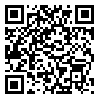BibTeX | RIS | EndNote | Medlars | ProCite | Reference Manager | RefWorks
Send citation to:
URL: http://ioh.iums.ac.ir/article-1-1002-en.html
Background and aims: Among different types of occupational accidents in the construction industry, falls and falling objects accidents (group I) account for 44% of construction accidents. Hit by vehicle, electric shock, collapse in the excavation and fire or explosion accidents (group II), while are only 7% frequent, make up about 26% of all fatalities and total disabling accidents. The aim of this study is to investigate these two groups of accidents and to discuss the obtained results in order to identify the potential hazards of construction industry.
Methods: Data mining methods are employed to analyze data in this research. Hence, 21864 data records which were provided by Social Security Organization (SSO) and were related to construction accidents of the whole country between 2007 and 2011 were analyzed using decision tree and association rule methods.
Results: In the first group of accidents, the frequency of accidents at night shift is less than the others, and injury to the head, back, spine and lower extremities are more prevalent. The final result is similar to other accidents. In the second group, the frequency of accidents among married and older workers is more than single and young workers. There was a higher frequency in the evening and especially night shifts as well as during the weekends. The injuries to the head, face and neck are greater than the other accidents in this group.
Conclusion: The results of this study confirm the results of the past research. Hence, utilizing data mining methods has been successful. Policy makers, managers of construction industry and managers of insurance companies can propose preventive actions against accidents using such patterns.
Received: 2013/07/2 | Accepted: 2013/12/11 | Published: 2014/11/22
| Rights and permissions | |
 |
This work is licensed under a Creative Commons Attribution-NonCommercial 4.0 International License. |





